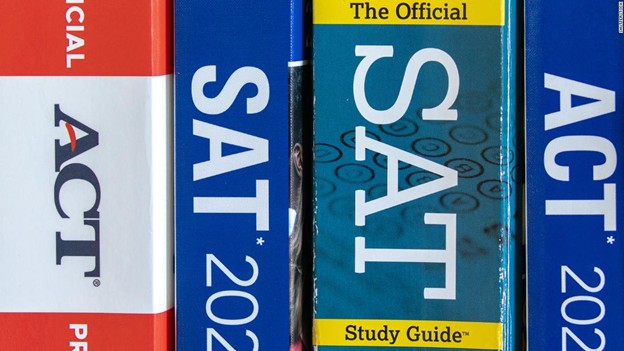For juniors, second semester is an exciting time. With most of high school behind you, the new possibilities of college are ahead. However, with your focus shifting to college preparations, it’s time to start thinking about taking placement exams like the ACT or SAT. These exams can be a source of stress for many students, but there are several steps you can take to perform your best.
Step 1: Know the test. ACT’s format is quickly changing, so it helps to stay aware of the updates to the test. Most ACTs will still be offered on paper, but some testing locations are switching to online tests. If you have a choice of when and where to take the test, think about whether you would prefer to take the online or paper test.
The ACT is also becoming shorter. While it will still include shortened reading, English, and math sections, the science section will be completely optional by September 2025. This means that the updated test will last about 2 and a half hours, including a break. You will receive a score from 1 (lowest) to 36 (highest) for each required section, and these scores are averaged to form your composite, or overall, score.
Step 2: Know your colleges. Many colleges do not require applicants to submit standardized test scores. However, it is still helpful for you to go on Naviance and look up the median ACT scores for students admitted to the colleges you’re considering. Having a realistic goal score can take some of the pressure off you.
Step 3: Prepare for an initial test. You have already taken the Pre-ACT 8/9 and the Pre-ACT, so you already know what kinds of questions are on each section of the test. To feel more confident on your first attempt at the real ACT, find online practice questions or get a test prep book. Work through these to get a realistic understanding of your strengths and weaknesses on each part of the test.
Step 4: Be ready on test day. Before taking the ACT, you will need to create an online account at my.act.org. The account will walk you through everything you must do before and bring to your test. In addition, you may want to learn some relaxation techniques to manage test anxiety. On test day, be sure to get at least 6 hours of sleep and eat a healthy meal so you are alert and focused during the ACT!
Step 5: Review your initial scores and try again if necessary. Congratulations, you have taken the ACT! You may take it again as many times as you want, but keep in mind you must tell your colleges how many times you took it. While you are not likely to increase your score by more than 4 points on your next attempt, a tutor or ACT prep class could help you work through subjects you do not understand.
Taking the ACT is not meant to be stressful. You are so much more than your test score, and the ACT’s main value is in measuring the basic English and math skills you have learned throughout high school. You’ve been working hard for almost three years, so with just a little extra practice, you can make sure that your scores reflect your hard work!
Resources:
My.ACT.org: https://my.act.org/account/signin?location=https://my.act.org
Free ACT Prep: https://www.act.org/content/act/en/products-and-services/the-act/test-preparation/free-act-test-prep.html
Upcoming ACT Dates: https://www.act.org/content/act/en/products-and-services/the-act/registration/test-dates.html
Managing Test Anxiety: https://www.usa.edu/blog/how-to-overcome-test-anxiety/















